Themed collection Digitalization in Reaction Engineering

Introduction to the themed collection on digitalization in reaction engineering
Federico Galvanin, Ryan Hartman, Amol Kulkarni and María José Nieves-Remacha introduce the Reaction Chemistry & Engineering themed collection on digitalization in reaction engineering.

React. Chem. Eng., 2022,7, 792-794
https://doi.org/10.1039/D2RE90011D
Accelerating manufacturing for biomass conversion via integrated process and bench digitalization: a perspective
This article provides a vision on how to accelerate the production of chemicals and fuels from biomass feedstocks using an integrated framework of data mining, retrosynthesis, lab automation, and process systems engineering.
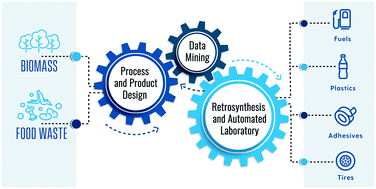
React. Chem. Eng., 2022,7, 813-832
https://doi.org/10.1039/D1RE00560J
Industrial data science – a review of machine learning applications for chemical and process industries
Understand and optimize industrial processes via machine learning and chemical engineering principles.
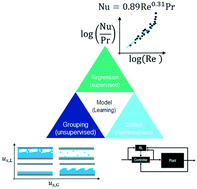
React. Chem. Eng., 2022,7, 1471-1509
https://doi.org/10.1039/D1RE00541C
Continuous biphasic chemical processes in a four-phase segmented flow reactor
A four-phase segmented flow regime for continuous biphasic reaction processes is introduced, characterized over 1500 automatically conducted experiments, and used for biphasic ligand exchange of CdSe quantum dots.
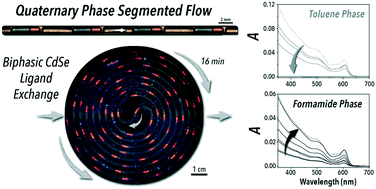
React. Chem. Eng., 2021,6, 1367-1375
https://doi.org/10.1039/D1RE00247C
Chemically-informed data-driven optimization (ChIDDO): leveraging physical models and Bayesian learning to accelerate chemical research
A method combining information from both experiments and physics-based models is used to improve experimental Bayesian optimization.

React. Chem. Eng., 2022,7, 855-865
https://doi.org/10.1039/D2RE00005A
Accelerated optimization of pure metal and ligand compositions for light-driven hydrogen production
Data-driven optimization of hydrogen production.

React. Chem. Eng., 2022,7, 599-608
https://doi.org/10.1039/D1RE00441G
A recurrent neural network model for biomass gasification chemistry
A recurrent neural network model is built to predict the temporal evolution of chemical species during biomass gasification.
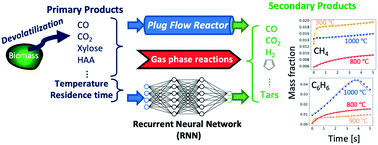
React. Chem. Eng., 2022,7, 570-579
https://doi.org/10.1039/D1RE00409C
Bayesian based reaction optimization for complex continuous gas–liquid–solid reactions
In recent years, self-optimization strategies have been gradually utilized for the determination of optimal reaction conditions owing to their high convenience and independence from researchers' experience.

React. Chem. Eng., 2022,7, 590-598
https://doi.org/10.1039/D1RE00397F
Facile synthesis of novel NH2-MIL-53(Fe)/AgSCN heterojunction composites as a highly efficient photocatalyst for ciprofloxacin degradation and H2 production under visible-light irradiation
A novel NH2-MIL-53(Fe)/AgSCN composite photocatalyst was successfully prepared by a one-step chemical precipitation method, the composite show high photocatalytic activity for antibiotics degradation and H2 evolution under visible light irradiation.

React. Chem. Eng., 2022,7, 84-100
https://doi.org/10.1039/D1RE00349F
Machine learning based interpretation of microkinetic data: a Fischer–Tropsch synthesis case study
A systematic approach for analysing kinetic data and identifying hidden trends using interpretation techniques in data science with the ANN.
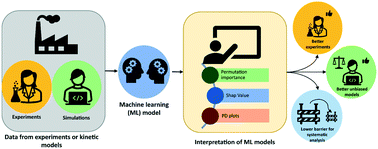
React. Chem. Eng., 2022,7, 101-110
https://doi.org/10.1039/D1RE00351H
Design of dynamic trajectories for efficient and data-rich exploration of flow reaction design spaces
Sinusoidal variations of operative parameters in flow chemistry allows the fast exploration of chemical design spaces through inline measurements of an objective function.
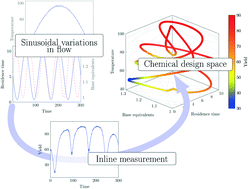
React. Chem. Eng., 2021,6, 2306-2314
https://doi.org/10.1039/D1RE00350J
An optimization-based model discrimination framework for selecting an appropriate reaction kinetic model structure during early phase pharmaceutical process development
A model discrimination workflow to develop fit for purpose kinetic models of new pharmaceutical compounds in early stages of drug development involving complex reaction networks with limited prior information and provision to run new experiments.

React. Chem. Eng., 2021,6, 2092-2103
https://doi.org/10.1039/D1RE00222H
Development of a continuous flow synthesis of FGIN-1-27 enabled by in-line 19F NMR analyses and optimization algorithms
A continuous flow synthesis of FGIN-1-27 has been developed using enabling technologies such as real-time in-line benchtop 19F NMR analysis and an optimization algorithm.
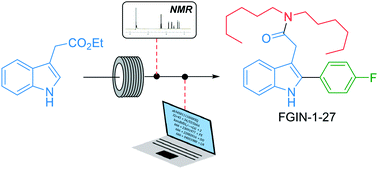
React. Chem. Eng., 2021,6, 1983-1992
https://doi.org/10.1039/D1RE00220A
An automated computational approach to kinetic model discrimination and parameter estimation
We herein report experimental applications of a novel, automated computational approach to chemical reaction network (CRN) identification.
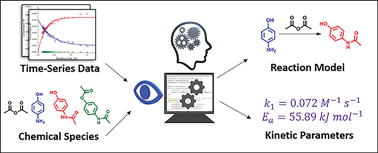
React. Chem. Eng., 2021,6, 1404-1411
https://doi.org/10.1039/D1RE00098E